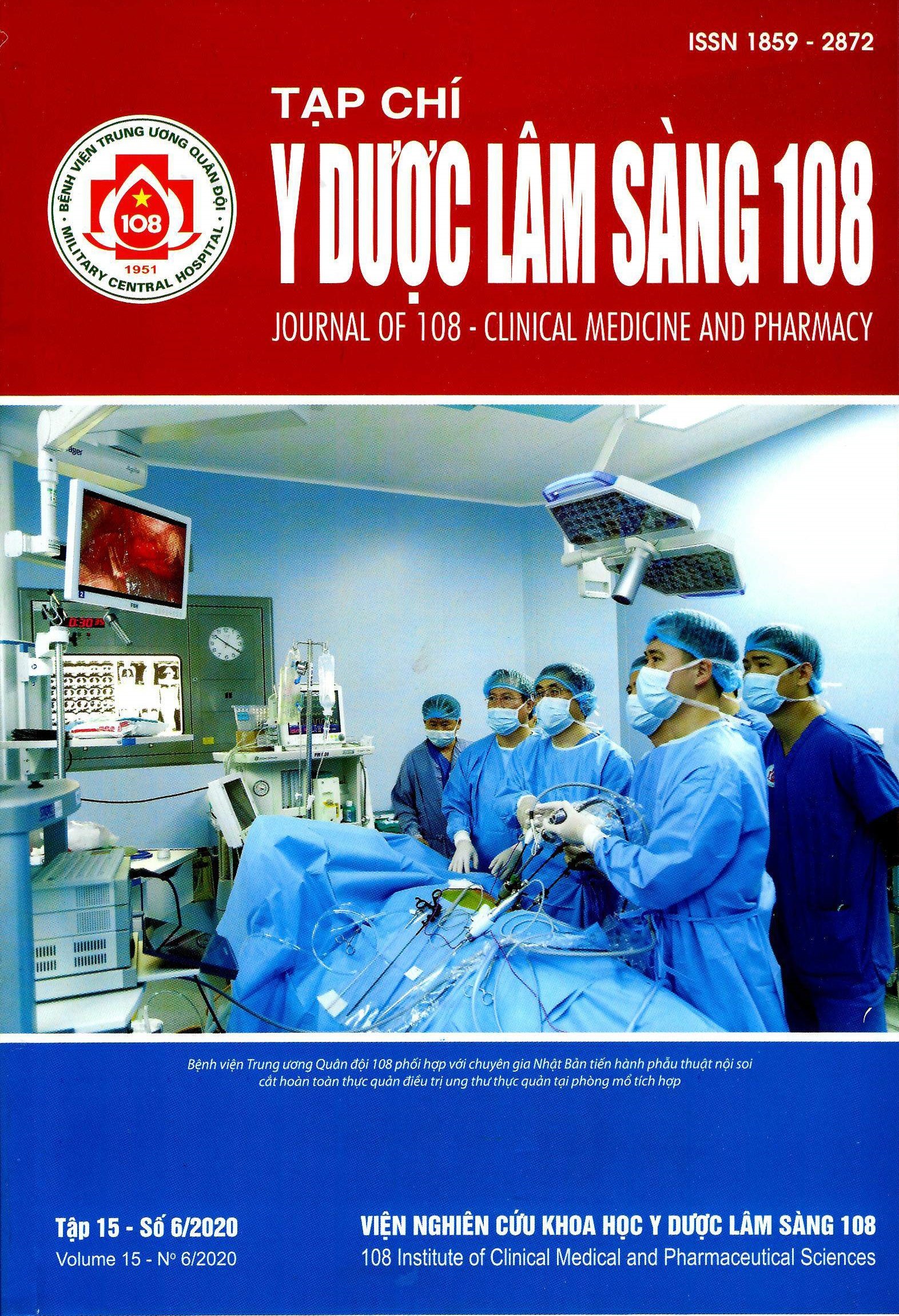Study on alteration of F wave, H reflex and sural nerve conduction in patients with Guillain-Barré syndrome
Main Article Content
Keywords
Abstract
Objective: To evaluate the variation of F wave, H reflex and sural nerve in patients with acute Guillain-Barré syndrome. Subject and method: 44 patients diagnosed with Guillain-Barré syndrome according to Asbury and Cornblath standards in 1990. The time from onset to examination was ≤ 15 days and patients agreed to be conducted diagnostic tests of nerve conduction. Study was designed as descriptive, cross-sectional one. Patient information was collected according to a consistent medical record. F waves are measured at median, ulnal and tibial nerves; the latency as well as the occurrence or loss of F waves were used for the evaluation. The H-reflex was measured at the tibial nerve which measured by the latency and occurrence or loss H reflex. The sural nerve condution was measured at the position around the outer ankle whose latency, amplitude and conduction are assessed. The above study indicators were abnormal when at least one parameter showed abnormalities. Result: The average age of the study subjects was 50.27 ± 15.81 years, the male/female ratio was 1.74/1. Destruction of myelin, axon and Miller-Fisher syndrome form accounted for 65.9%, 22.7% and 11.4%, respectively. The time for conducting these tests was 5.93 ± 5.06 days after disease onset. Abnormal F waves and H reflex were found in 59.1% and 95.4%, respectively. The difference of F wave and H reflex abnormality according to disease subtype was not statistically significant (p>0.05). Abnormal duration, amplitude and conduction velocity of the sural nerve were recorded at 36.3%, 38.6% and 43.1%, respectively. Conclusion: A study of 44 patients with acute Guillain-Barré syndrome showed that at the time of the survey from the onset of disease was 5.93 ± 5.06 days, 59.1% of patients had abnormal F waves and 95.4% of patients had H reflex abnormalities. There was no significant difference of F wave and H reflex abnormalities according to disease subtype. The normal parameters of sural nerve were found in more than half of patients (56.9%).
Article Details
References
2. Nguyễn Minh Đức (2017) Nghiên cứu đặc điểm lâm sàng, chẩn đoán điện và kết quả điều trị hội chứng Guillain-Barré bằng phương pháp thay huyết tương. Luận án Tiến sĩ Y học, Viện Nghiên cứu Khoa hoc Y - Dược lâm sàng 108.
3. Lý Thị Kim Lài (2007) Khảo sát các yếu tố tiên lượng suy hô hấp trên bệnh nhân viêm đa rễ dây thần kinh cấp tính. Luận văn Bác sĩ Nội trú, Trường Đại học Y - Dược Thành phố Hồ Chí Minh.
4. Thirugnanam Umapathi, Jasmine S, Koh Cheng YJ et al (2020) The utility of sural-sparing pattern in the electrodiagnosis of regional subtypes of Guillain-Barré Syndrome. Clin Neurophysiol Pract 5: 43-45.
5. Asbury AK, Cornblath DR (1990) Assessment of current diagnostic criteria for Guillain-Barré syndrome. Ann Neurol 27: 21-24.
6. Jun Kimura (2001) Electrodiagnosis in disease of nerve and muscle: Principles and practice. 3 ed, Oxford University Press: 991.
7. Hafsteinsdóttir B, Ólafsson E, Jakobsson F (2018) Incidence and outcome of Guillain-Barré syndrome in Iceland: A population-based study. Acta Neurologica Scandinavica 138(5): 454-458.
8. Peric S, Milosevic V, Ber isavac I et al (2014) Clinical and epidemiological features of guillain-barre syndrome in the Western Balkans. J Peripher Nerv Syst 19(4): 317-21.
9. Kesici S, Tanyıldız M, Yetimakman F et al (2019) A Novel treatment strategy for severe guillain-barré syndrome: Zipper Method. Journal of Child Neurology 34(5): 277-283.
10. Sipila JO, Soilu-Hanninen M (2015) The incidence and triggers of adult- onset Guillain-Barre syndrome in southwestern Finland 2004-2013. Eur J Neurol 22(2): 292-298.
11. Blum S, Reddel S, Spies J et al (2013) Clinical features of patients with Guillain-Barre syndrome at seven hospitals on the East Coast of Australia. J Peripher Nerv Syst 18(4): 316-320.
12. Gordon PH, Wilbourn AJ (2016) Early electrodiagnostic findings in Guillain-Barré syndrome. Arch Neurol 58(6): 913-917.
13. Wali A, Kanwar D, Khan SA (2017) Early electrophysiological findings in acute inflammatory demyelinating polyradiculoneuropathy variant of Guillain-Barre syndrome in the Pakistani population - a comparison with global data. Journal of the Peripheral Nervous System 22(4): 451-454.
14. Baraba R, Sruk A, Sragali L et al (2011) Electrophysiological findings in early Guillain-Barre syndrome. Acta Clin Croat 50(2): 201-207.
 ISSN: 1859 - 2872
ISSN: 1859 - 2872
